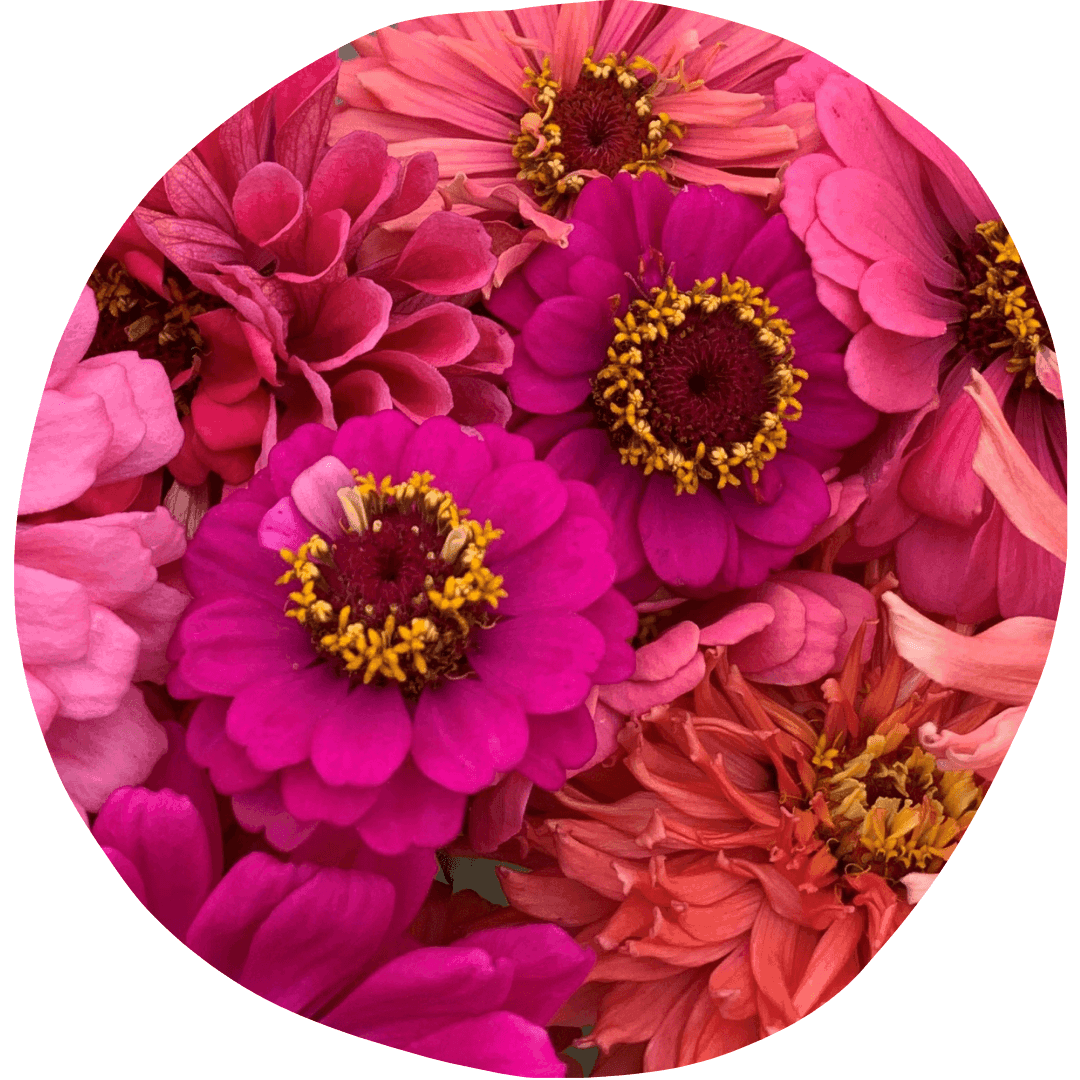How to Grow Zinnias
Growing Conditions
Zinnias are colourful annual flowers that make a lovely addition to any cut flower garden. Each plant produces one ruffled flower atop a single stem, and they are very attractive to pollinators like butterflies and bees. Blooms may be single-flowered, semi-double-flowered, or double-flowered. Zinnias require full sun and rich, well-draining soil. Choose a planting location that allows ample space between each plant (6-18" depending on mature size).
Starting
Direct sow your zinnia seeds after all risk of frost has passed in the spring, or start indoors 4-6 weeks before the last frost. If started indoors, remember zinnias have sensitive roots and should be handled very carefully when transplanting. They will germinate well at soil temperatures between 21 and 24°C, and sprouts should appear in 4-7 days. Plant multiple rounds of seeds over several weeks through the spring to extend blooming time. Seeds should be planted at a depth of 1/4" and given at least 6" of space. Taller varieties may benefit from staking for additional support.
Find our full guide to seed starting here.

Care
Zinnias benefit from frequent cutting or deadheading to increase bloom production. Add a fertilizer high in phosphorus during the blooming period to encourage more flowers. Zinnias are susceptible to powdery mildew, and should always be planted with space between each plant to allow for proper airflow.
Pests and Diseases
Aphids - Small green, black, or brown insects that feed on the sap of garden plants. You'll find them under leaves, at blossom tips, and in the joints of stems.
Japanese Beetles - Shiny blue-green beetles with voracious appetites that eat around the veins in leaves, leaving lace-like skeletons behind.
Spider Mites - Tiny reddish brown insects that can be identified by the webbing they create around the leaves and stems of plants.
Leaf Spot/Blight - Fungal infections that cause dark spots on foliage.
Powdery Mildew - White mildew on the top surfaces of leaves, starting as small spots and growing to cover the entire leaf.
Crop rotation, garden cleaning, and proper spacing between plants are the best ways to prevent problems caused by pests and diseases. Diatomaceous earth can be used to control crawling pest species, while sticky traps will catch flying pests. Row covers and insect netting can also prevent travelling pests from landing on your crops and causing damage. Ensure good drainage in your chosen planting spot to prevent problems with fungus and rot. Contact us for more specialized pest control methods such as beneficial nematodes.
Harvest
Cut your zinnias often to encourage continual flowering through the summer and fall. They're a great choice for the cut flower garden because they're quick-growing and very productive. Harvest your flowers after they have opened, when their stems are firm and rigid. It's recommended to add a few drops of bleach to your vase water to reduce the impact of bacteria from zinnia stems, especially if they're being added to an arrangement with other flowers.

